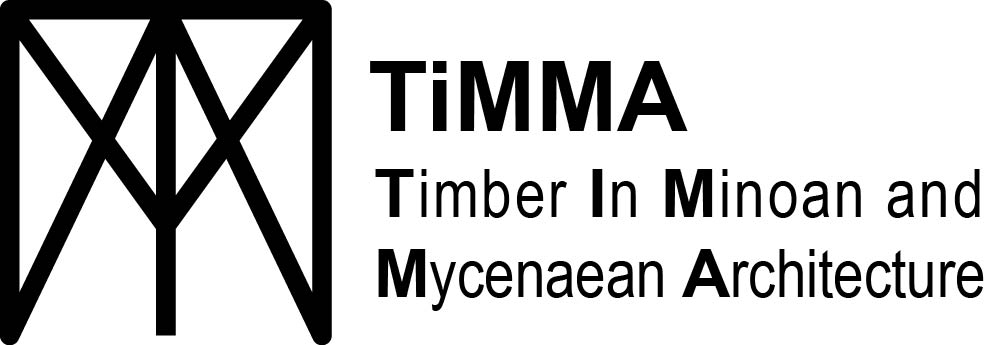tIMBER PREPARATION
In 2023, the experimental work on timber begun in the TiMMA project, in collaboration with the French School of Athens and the UMR 7041 ArScAn. The project focuses on reconstructing a small building inspired by Minoan architecture, particularly the Protopalatial architecture of the Quartier Mu, at the Malia site in Crete. The project is led by Maia Pomadere (Univ. Paris 1, UMR 7041 ArScAn), in collaboration with several partners.
The team. From left to right: N. Daroukakis, E. Tsakanika, P. Bacoup, V. Loescher and E. Maragoudaki (© photograph M. Pomadere)
The first experimental phase (24th May-4th June) aimed to reconstruct the wooden elements of the mud brick walls of a 15 m² building.
Hypothetical 3D rendering of the future experimental building (© 3D rendering P. Bacoup)
For three of the walls, these elements consisted of longitudinal and transverse pieces of wood. These pieces could be round and simply debarked or squared. The fourth wall allowed us to reconstruct a door and window unit, inspired by remains discovered in the 'Crypte hypostyle' of Malia and in buildings at Akrotiri (Santorini). In fact, this last structure was the main focus of the experiment. Bronze tools (saws, adzes, axes, wedges, hammers, and chisels) were used, replicated from Mycenaean archaeological objects, along with wooden tools (hammers, mallets, and wedges) inspired by Egyptian and continental elements from the same period.
Set of tools used during the experiment.(© photograph V. Loescher)
Various techniques for shaping pieces of wood were tested, including squaring with adzes, radial splitting, tangential splitting, cross-cutting, and sawing logs of various diameters.
Splitting a log into two parts (diameter: 45 cm) ( © photograph P. Bacoup)
Sawing a door jamb (© photograph E. Maragoudaki)
Two joining techniques attested during the Bronze Age in Crete were also tested: lap joint and mortise-and-tenon. A third technique, the use of loose tenons to join two superimposed horizontal pieces of wood, will be tested in July during the assembly of the entire structure.
Shaping a lap joint (© photograph C. Langohr)
Cutting a tenon (© photograph E. Maragoudaki)
Hollowing out a mortise (© photograph V. Loescher)
Each stage of the construction process was meticulously studied. For each activity, the dimensions of the wooden pieces, the tools used, the duration of the work, the person(s) responsible for the task, and the detailed progress of the operation were recorded. The data collection included photographic and video recordings. To ensure accurate comparisons and minimize variables that could distort the results, only two species of wood were used: cypress and pine, both of which have been documented in Minoan architecture. Additionally, only one bronze alloy (Sn 8-9%) was used for the tools.
Further information on the experimental construction here: https://www.efa.gr/en/recherche/activites-de-l-efa/2365-alias
